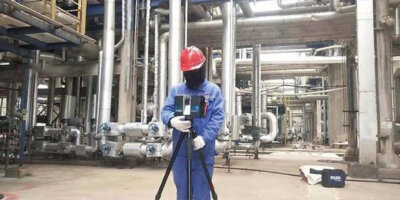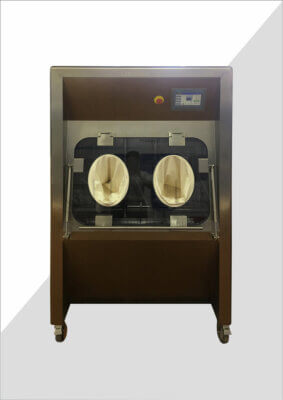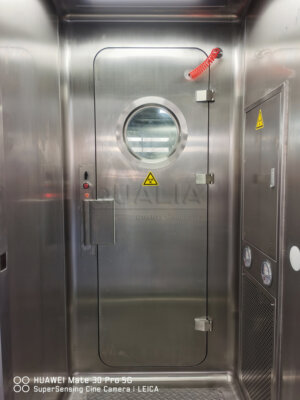The pharmaceutical industry plays a crucial role in developing life-saving medications and treatments. However, with great innovation comes great responsibility, particularly in managing potentially hazardous waste. Effluent Decontamination Systems (EDS) have emerged as a pivotal solution in ensuring safe waste management practices within the pharmaceutical sector. These systems are designed to treat and neutralize liquid waste before it's released into the environment, protecting both public health and ecological balance.
As pharmaceutical companies face increasing scrutiny over their environmental impact, the implementation of effective EDS has become not just a regulatory requirement but a cornerstone of corporate responsibility. This article delves into the critical role of EDS in pharmaceutical waste management, exploring its benefits, challenges, and the latest innovations driving the industry forward.
The journey from laboratory to landfill is complex, with numerous stages where contamination can occur. EDS serves as a vital checkpoint, ensuring that harmful substances are neutralized and rendered safe before they leave the facility. As we explore this topic, we'll uncover the technologies and strategies that make EDS an indispensable part of the pharmaceutical waste management ecosystem.
"Effluent Decontamination Systems are the front line of defense against pharmaceutical pollution, safeguarding our water resources and public health from potentially harmful drug residues and chemical byproducts."
| Aspect | Traditional Waste Management | EDS-Enhanced Waste Management |
|---|---|---|
| Environmental Impact | Higher risk of contamination | Significantly reduced environmental footprint |
| Regulatory Compliance | May struggle to meet evolving standards | Meets or exceeds current regulations |
| Cost Efficiency | Lower initial investment, higher long-term costs | Higher initial investment, lower long-term costs |
| Public Perception | Potential for negative PR | Improved corporate image |
| Water Quality | Potential for trace contaminants | Cleaner effluent discharge |
What are the core components of an Effluent Decontamination System?
At the heart of pharmaceutical waste management lies the Effluent Decontamination System, a sophisticated array of technologies designed to purify liquid waste. The core components of an EDS work in concert to break down, neutralize, and remove contaminants from wastewater before it's released into the environment.
These systems typically include primary treatment stages for removing large particles, secondary biological treatment for breaking down organic compounds, and tertiary treatment for fine-tuning water quality. Advanced oxidation processes, membrane filtration, and UV disinfection are often employed to ensure the highest standards of effluent purity.
The QUALIA Effluent Decontamination System exemplifies the cutting-edge technology available in the industry, offering tailored solutions for biosafety level 2, 3, and 4 liquid waste management.
"A well-designed EDS integrates multiple purification technologies to create a robust, multi-barrier approach to pharmaceutical waste treatment, ensuring that even the most persistent contaminants are effectively neutralized."
| Treatment Stage | Process | Contaminants Removed |
|---|---|---|
| Primary | Screening, Sedimentation | Solids, Large Particles |
| Secondary | Biological Treatment | Organic Compounds |
| Tertiary | Advanced Oxidation, Filtration | Micropollutants, Pathogens |
How does EDS contribute to regulatory compliance in the pharmaceutical industry?
In the highly regulated pharmaceutical industry, compliance with environmental standards is non-negotiable. Effluent Decontamination Systems play a pivotal role in helping companies meet and exceed these regulatory requirements. By implementing state-of-the-art EDS, pharmaceutical manufacturers can demonstrate their commitment to environmental stewardship and avoid costly fines or reputational damage associated with non-compliance.
EDS contributes to regulatory compliance by ensuring that effluent meets or exceeds the quality standards set by local, national, and international authorities. These systems are designed to be adaptable, allowing for upgrades and modifications as regulations evolve, thus future-proofing pharmaceutical operations against changing environmental laws.
Moreover, EDS provides detailed monitoring and reporting capabilities, which are essential for transparent communication with regulatory bodies. This data-driven approach not only facilitates compliance but also supports continuous improvement in waste management practices.
"Implementing a robust Effluent Decontamination System is not just about meeting current standards—it's about setting a new benchmark for environmental responsibility in the pharmaceutical industry."
| Regulatory Aspect | EDS Contribution |
|---|---|
| Effluent Quality | Ensures discharge meets or exceeds standards |
| Monitoring | Provides real-time data on water quality |
| Reporting | Generates comprehensive compliance reports |
| Adaptability | Allows for system upgrades to meet new regulations |
What are the environmental benefits of implementing EDS in pharmaceutical facilities?
The implementation of Effluent Decontamination Systems in pharmaceutical facilities yields substantial environmental benefits that extend far beyond the confines of the manufacturing plant. By effectively treating wastewater at the source, EDS prevents the release of potentially harmful substances into aquatic ecosystems, safeguarding biodiversity and water resources.
One of the most significant environmental advantages of EDS is the reduction of pharmaceutical residues in water bodies. These systems are designed to target and remove a wide range of drug compounds and their metabolites, which can have detrimental effects on aquatic life even at low concentrations. By minimizing the release of these micropollutants, EDS helps maintain the ecological balance of rivers, lakes, and coastal areas.
Furthermore, EDS contributes to water conservation efforts by producing high-quality effluent that can be safely reused within the facility or for other purposes, reducing the overall water footprint of pharmaceutical operations.
"Effluent Decontamination Systems are not just waste treatment technologies; they are guardians of our aquatic ecosystems, ensuring that the life-saving drugs we produce don't become life-threatening pollutants."
| Environmental Aspect | Impact of EDS |
|---|---|
| Water Quality | Significant reduction in pharmaceutical residues |
| Aquatic Ecosystems | Protection of flora and fauna from drug exposure |
| Water Conservation | Enables safe water reuse and recycling |
| Carbon Footprint | Reduces energy use compared to off-site treatment |
How does EDS technology adapt to different types of pharmaceutical waste?
The pharmaceutical industry produces a diverse array of waste streams, each with its unique chemical composition and potential environmental impact. Effluent Decontamination Systems are designed with this variability in mind, offering adaptable solutions that can be tailored to specific waste profiles.
Modern EDS technology incorporates modular designs and programmable control systems that allow for real-time adjustments based on the incoming waste stream. This flexibility enables pharmaceutical facilities to effectively treat a wide range of effluents, from high-organic-load fermentation waste to chemical-laden laboratory rinse water.
Advanced EDS may include multiple treatment trains that can be activated or bypassed depending on the waste characteristics. For instance, a system might employ enhanced biological treatment for biodegradable compounds, while redirecting recalcitrant substances through advanced oxidation processes.
"The versatility of modern Effluent Decontamination Systems allows pharmaceutical companies to maintain stringent environmental standards across their entire product portfolio, from small-molecule drugs to complex biologics."
| Waste Type | EDS Adaptation |
|---|---|
| High Organic Load | Enhanced biological treatment |
| Chemical Residues | Advanced oxidation processes |
| Antibiotics | Membrane filtration and UV disinfection |
| Endocrine Disruptors | Activated carbon adsorption |
What role does automation play in enhancing EDS efficiency?
Automation has revolutionized the operation of Effluent Decontamination Systems, bringing unprecedented levels of precision, consistency, and efficiency to pharmaceutical waste management. By integrating smart sensors, real-time monitoring, and adaptive control systems, automated EDS can respond dynamically to changes in waste composition and flow rates.
This level of automation not only optimizes treatment processes but also minimizes human error and reduces the need for constant operator intervention. Automated systems can adjust chemical dosing, flow rates, and treatment parameters to maintain optimal performance under varying conditions, ensuring consistent compliance with discharge standards.
Moreover, automation facilitates the collection and analysis of vast amounts of operational data, enabling predictive maintenance, performance optimization, and continuous improvement of the EDS. This data-driven approach allows pharmaceutical companies to refine their waste management strategies and demonstrate their commitment to environmental stewardship.
"Automation in Effluent Decontamination Systems transforms waste treatment from a reactive process to a proactive, intelligent system that anticipates and adapts to changing conditions, setting new standards for efficiency and reliability."
| Automation Feature | Benefit |
|---|---|
| Real-time Monitoring | Immediate detection of anomalies |
| Adaptive Control | Optimized treatment for varying waste streams |
| Data Analytics | Insights for process improvement |
| Remote Operations | Enhanced safety and reduced on-site staffing needs |
How do EDS contribute to the circular economy in pharmaceuticals?
The concept of a circular economy is gaining traction across industries, and the pharmaceutical sector is no exception. Effluent Decontamination Systems play a crucial role in this paradigm shift by not only treating waste but also creating opportunities for resource recovery and reuse.
Advanced EDS technologies can facilitate the extraction of valuable compounds from waste streams, turning what was once a liability into a potential asset. For instance, some systems are capable of recovering solvents, metals, or even active pharmaceutical ingredients (APIs) from effluent, which can then be reintroduced into the manufacturing process or sold as raw materials.
Furthermore, by producing high-quality treated water, EDS enables water recycling within pharmaceutical facilities, reducing freshwater consumption and moving towards closed-loop systems. This approach not only conserves water resources but also minimizes the overall environmental footprint of pharmaceutical operations.
"Effluent Decontamination Systems are evolving from end-of-pipe solutions to integral components of a circular pharmaceutical economy, where waste is viewed as a resource and environmental stewardship drives innovation."
| Circular Economy Aspect | EDS Contribution |
|---|---|
| Resource Recovery | Extraction of valuable compounds from waste |
| Water Recycling | Production of high-quality water for reuse |
| Waste Reduction | Minimization of discharge volumes |
| Energy Efficiency | Heat recovery from treatment processes |
What future innovations can we expect in EDS for pharmaceutical waste management?
The field of Effluent Decontamination Systems is ripe for innovation, with emerging technologies poised to revolutionize pharmaceutical waste management. As we look to the future, several promising developments are on the horizon that could enhance the efficiency, effectiveness, and sustainability of EDS.
One area of significant potential is the application of artificial intelligence and machine learning to optimize EDS operations. These technologies could enable predictive modeling of waste streams, allowing for preemptive adjustments to treatment processes and even informing upstream manufacturing decisions to minimize waste generation.
Another exciting frontier is the development of bio-based treatment technologies, such as engineered microorganisms or enzymes specifically designed to break down pharmaceutical compounds. These biological solutions could offer more sustainable and environmentally friendly alternatives to chemical treatments.
Nanotechnology is also expected to play a larger role in future EDS, with nanomaterials offering enhanced filtration capabilities and catalytic properties that could dramatically improve the removal of micropollutants and emerging contaminants.
"The future of Effluent Decontamination Systems lies at the intersection of biology, nanotechnology, and artificial intelligence, promising a new era of pharmaceutical waste management that is smarter, cleaner, and more sustainable than ever before."
| Future Innovation | Potential Impact |
|---|---|
| AI-driven Optimization | Predictive waste management and process efficiency |
| Bio-engineered Solutions | Targeted breakdown of pharmaceutical compounds |
| Nanotechnology | Enhanced removal of micropollutants |
| Green Chemistry | Reduced reliance on harsh chemical treatments |
In conclusion, Effluent Decontamination Systems stand as a testament to the pharmaceutical industry's commitment to environmental stewardship and public health. As we've explored, these systems are not merely end-of-pipe solutions but integral components of a holistic approach to sustainable drug manufacturing.
From ensuring regulatory compliance to contributing to the circular economy, EDS play a multifaceted role in modern pharmaceutical operations. The adaptability of these systems to various waste streams, coupled with the power of automation and data analytics, positions EDS as a critical technology for the industry's future.
As we look ahead, the continued evolution of EDS technologies promises even greater advancements in pharmaceutical waste management. With innovations on the horizon in artificial intelligence, biotechnology, and nanotechnology, the future of EDS is poised to set new benchmarks for efficiency, sustainability, and environmental protection.
The pharmaceutical industry's adoption and continuous improvement of Effluent Decontamination Systems not only safeguards our environment but also reinforces the sector's role as a leader in responsible manufacturing practices. As these technologies continue to advance, they will undoubtedly play a pivotal role in shaping a cleaner, greener future for pharmaceutical production and waste management.
External Resources
Waste & Recycling Management Software for Pharma Companies – This article discusses the importance of proper pharmaceutical waste disposal, particularly in Quebec, where pharmaceutical companies must implement safe disposal and collection programs under Extended Producer Responsibility (EPR) regulations by June 30, 2024. It highlights the role of recycling software in meeting these regulations.
Managing Electronic Waste in Healthcare – This resource focuses on the challenges and best practices for managing electronic waste in healthcare settings. It covers secure disposal methods, data security considerations, inventory and asset management, and environmental sustainability to ensure proper e-waste disposal.
BioPharma Electronic Waste Disposal to Meet ESG Guidelines – This article emphasizes the importance of proper electronic waste disposal in the pharmaceutical and biotechnology industries to meet Environmental, Social, and Governance (ESG) guidelines. It discusses regulatory compliance, data security, and the use of certified e-waste recycling vendors.
Methods for Maintaining a Record of Waste Packages – Although focused on radioactive waste, this document provides a comprehensive framework for maintaining records in waste management, which can be applied to other types of waste, including pharmaceutical waste. It emphasizes the importance of accurate data collection and record-keeping throughout the waste processing cycle.
Pharmaceutical Waste Management System – Are the Current Techniques Sustainable? – This review examines the sustainability and eco-friendliness of current pharmaceutical waste management techniques. It discusses options such as incineration for solid and semi-solid waste and wastewater treatment plants for liquid waste, evaluating their environmental impact.
Related Contents:
- Navigating Regulatory Waters: Effluent Treatment in Biopharma
- Navigating the Complexities of High-Potency API Effluent Management
- Effluent Decontamination Systems: Safeguarding Malaysia’s Environment
- Effluent Decontamination: Ensuring Pharmaceutical Safety
- Continuous Effluent Decontamination: Protecting Our Environment
- The Environmental Impact of Pharmaceutical Effluents: A Comprehensive Assessment
- Revolutionizing Pharmaceutical Wastewater Treatment
- Effluent Decontamination: Essential for High-Risk Labs
- Revolutionizing Pharmaceutical Effluent Treatment: Emerging Technologies





























